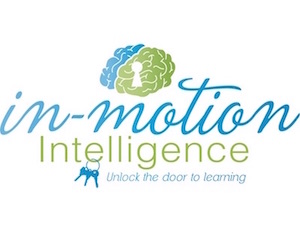As I settled in for my adjustment, the chiropractor randomly asked, “How do I explain Brain Gym® to my clients whom I think it can help?”
That, my friend, is a million dollar question. Did he ask it so that my brain would focus on something other than his hands on my neck and the inevitable crackling that would soon occur? Or did he ask it because my previous answers have been insufficient? What triggered this question? It doesn’t really matter. My brain took off in a multitude of directions as it strove to answer his question. The adjustments were effortless because my mind was elsewhere. It was a win-win!
Keep It Simple, Sweetie
When explaining Brain Gym, I prefer the KISS principle: Keep It Simple Sweetie!
My short answer is, “In its simplest, most basic form, the Brain Gym® program involves movements that we can do with our body to help our mind work its best.” This usually prompts a follow-up question, “What do you mean?” I joyfully jump on the opportunity to illustrate with movement; my preferred example is the Cross Crawl. I show how to lift a knee and bring the opposite hand across. I like this one because it is a non-controversial movement, which illustrates how movement on one side of the body is connected to the opposite side of the brain. Hence, moving both sides at once gets both sides of the brain firing. I prefer to answer an individual’s questions, since they are invested in the answer, even if it is simple.
Sometimes the discussion goes beyond a single demonstration.
Self-Regulation
On a deeper level, the Brain Gym® program teaches self-regulation. When doing the movements bilaterally, we pause to recognize our physiology. How do our muscles, tendons, and ligaments feel on the parts we just moved versus the rest of our body? This self-reflection then translates into recognizing when our body is feeling less than optimum. After recognition, comes action. Either I choose movement as a means to act or I choose to remain in my current HOMEostasis.
For example, I frequently see this at performances, such as horse shows. The body may want to perform and the mind may regress into a panic attack. Conversely, sometimes the mind wants to perform but the body denies (e.g. concussion symptoms, seizing muscles, tummy aches, headaches). Simple intentional movements can help bring the body and mind into alignment. The kids I hang around know I encourage them to “Smell the Flowers and Blow Out the Candles.” It is a simple tool that gets them Belly Breathing, which is a Brain Gym movement. We often don’t realize we are holding our breath until partaking in this activity.
Recognizing our patterns of behavior and changing the unsupportive ones is self-regulation at its finest.
Non-Judgmental
Becoming less judgmental is another bonus of Brain Gym. There are moments when I may recognize stress in my system and choose to remain stressed. It is no one’s business to force me out of my mood. I get to determine my readiness. When I can accept my stress, anxiety, fear, or you name it, then I can more readily move through it to come out the other side. With abundant personal experience, judging of others often decreases because my circle of understanding increases. I am more able to hold space for myself and others.
When I coach teenagers, it can be real easy to get annoyed with certain behaviors. However, as someone who easily gets over-stimulated, I am able to empathize with the kids who appear withdrawn or crabby. They shut down (hoodies up, ear buds in, blank stares) in over-active environments . I understand; rather than berating them to pay attention and participate, I am more likely to empathize and less likely to judge. Does this mean I never get annoyed with someone else’s behavior? Of course not. Life is dynamic—we constantly dance across the spectrum of too much, too little and just right. The gift is in discovering how to spend more time in the land of “just right.”
Goals
Regulating oneself and decreasing judgmental thoughts involve the conscious brain. I get to choose those paths. In the Brain Gym work, we use goal setting as a means to make choices. Setting a goal around a movement impacts its effectiveness. I can set goals for myself because my mind and body are in congruent agreement. When I try to set goals for others, congruency may be lacking or absent altogether; in other words, their mind or body may not be willing or able to meet the goal.
Drawing Out
Hence, the Brain Gym work is individualized and ideally self-directed. It is vital to remember we cannot force ourselves onto others. We can only offer opportunities for a different experience—perhaps one with less anxiety, more flexibility, greater ease (when taking a test), or better recall. Adults who work with kids want to teach. But true education isn’t about teaching, per se; it is about drawing out of the individual what he is ready to encounter and setting that person up for a successful experience, which engages both the mind and body.
Simple, Yet Complex
As you can see, “How do I explain Brain Gym?” can be a trick question. In its simplicity, there is complexity. And conversely, in its complexity, it is simple movements of the body and mind.
To find out more, read a book, take a class/workshop, schedule a consultation.
(c) 2017 cindy goldade, in-motion intelligence
Brain Gym® is a registered trademark of the Educational Kinesiology Foundation, Santa Barbara, CA www.braingym.org






